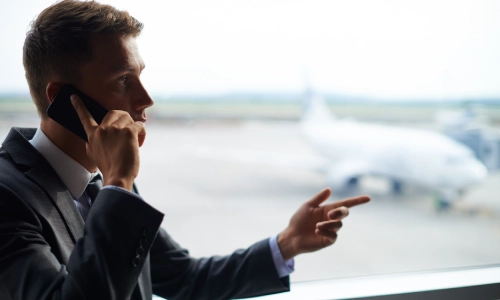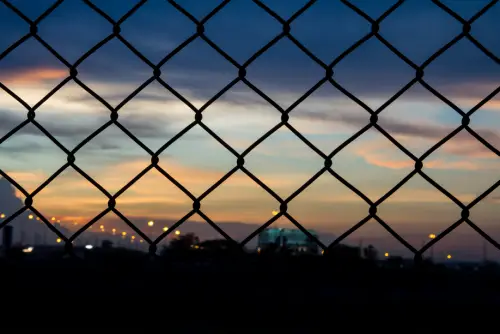
Aviation accidents are rare but often catastrophic, leaving victims and families facing devastating injuries, complex investigations, and overwhelming uncertainty. Whether the crash involves a private plane, helicopter, or commercial flight, understanding what went wrong requires careful legal and technical review.
At Singh Ahluwalia Attorneys at Law, we help victims across San Antonio and Texas pursue justice and accountability after aviation accidents. Our team thoroughly investigates every detail, including pilot training, maintenance records, and regulatory compliance, to identify responsible parties and secure fair compensation for those affected.
Why You Need a San Antonio Aviation Accident Attorney
Aviation accident cases involve more than basic negligence law; they require knowledge of federal regulations and complex technical evidence. In San Antonio, where flights move through busy airspace at San Antonio International and nearby charter hubs, investigations often depend on maintenance logs, flight data, and communication records.
An experienced aviation attorney helps secure these critical details early, working with experts familiar with Texas flight operations and federal standards. Local familiarity with airport systems and regional flight procedures allows your legal team to protect evidence, identify responsible parties, and safeguard your rights from the start.
Common Causes of Aviation Accidents in Texas
Texas has one of the busiest and most diverse aviation networks in the country, with commercial airlines, private charters, crop dusters, and medical helicopters sharing airspace every day. In and around San Antonio, this activity centers on San Antonio International Airport (SAT), Stinson Municipal Airport, and nearby private airfields serving the Hill Country and South Texas region. Unfortunately, a single error or oversight in any of these operations can have tragic results.
Pilot Error and Human Factors
Pilot misjudgment remains one of the most common causes of aviation accidents. Fatigue, distraction, or poor decision-making during takeoff or landing can lead to catastrophic consequences, most especially in high-traffic zones such as San Antonio’s approach corridors. Even experienced pilots can make split-second mistakes when faced with unexpected crosswinds, equipment malfunctions, or changing weather patterns over South Texas.
Mechanical or Design Failures
Aircraft rely on thousands of interdependent parts functioning precisely as intended. A single defective component, whether from improper maintenance or a manufacturing flaw, can compromise flight safety. Our team has handled cases involving faulty engines, electrical systems, and control surfaces where maintenance contractors failed to follow FAA-approved procedures.
Weather Conditions and Environmental Hazards
San Antonio’s weather can shift rapidly, from intense summer heat to sudden thunderstorms or strong gusts rolling off the Hill Country. Pilots who fail to adjust flight plans or underestimate turbulence risk passenger safety. Reduced visibility from dust or rain has also contributed to runway and landing incidents in the region.
Air Traffic Control or Ground Crew Negligence
Aviation safety depends on precise coordination between pilots and ground personnel. Communication errors at airports, such as incorrect altitude clearance or delayed runway guidance, can result in mid-air or taxiway collisions. In San Antonio’s increasingly active airspace, small lapses in procedure can have serious outcomes.
Inadequate Maintenance and Inspections
Aircraft maintenance teams play a critical role in preventing avoidable accidents. Skipped inspections, falsified logbooks, or unqualified repair work can all lead to mechanical failure in flight. Our firm has worked with independent experts to trace the origins of such failures and identify when service providers ignored Federal Aviation Administration maintenance schedules or safety bulletins designed to prevent these tragedies.
Who Can Be Liable for an Aviation Accident?
Establishing responsibility after an aviation accident requires more than a surface-level investigation; it takes a clear understanding of how aircraft operations, maintenance, and airspace management intersect. In the San Antonio aviation community, we’ve seen how even one small oversight, an unlogged repair, a delayed clearance, or a fatigued pilot, can turn a routine flight into tragedy. Knowing who was responsible means looking at every angle of flight safety.
Airlines and Charter Operators
Commercial and private operators flying in and out of San Antonio International and Stinson Municipal Airport are expected to follow strict safety and maintenance schedules. When these companies cut corners on pilot training, equipment upkeep, or required flight checks, the consequences can be catastrophic. Our familiarity with regional flight operations helps us identify where compliance broke down and who should be held accountable.
Aircraft and Parts Manufacturers
Even the best-trained pilots can’t overcome a design flaw or mechanical defect. We’ve reviewed cases involving failed fuel systems, sensor malfunctions, and control-surface issues that originated from manufacturing defects. When a part fails midair, our job is to trace the fault back through the maintenance records, supplier chains, and service bulletins to find the source of the failure.
Maintenance Companies and Mechanics
Many aircraft in South Texas rely on independent maintenance teams to stay airworthy. If a technician overlooks a service interval or signs off on an incomplete inspection, that single act of negligence can endanger everyone aboard. Our experience reviewing local maintenance contracts and FAA repair station documentation helps us pinpoint where maintenance failures occurred.
Air Traffic Controllers and Government Entities
The airspace surrounding San Antonio can be busy, especially with military and commercial traffic sharing similar corridors. A single communication lapse or misinterpreted instruction between a tower and cockpit can have devastating results. We understand how controller logs, radar data, and tower transcripts reveal what truly happened when coordination breaks down.
Airport Operators and Property Owners
From the main runways at SAT to smaller airstrips serving the Hill Country, every facility has a duty to maintain safe, operable conditions. Poor lighting, foreign object debris, and runway surface deterioration can all contribute to accidents. Our local knowledge of these facilities helps us identify when ground hazards or airport mismanagement played a role.
Injuries and Damages from Aviation Accidents
Aviation accidents rarely leave survivors unscathed. Even minor flight incidents can result in severe trauma due to the altitude, speed, and mechanical forces involved. In San Antonio, where commercial and private aircraft operate daily from facilities like San Antonio International Airport and Stinson Municipal Airport, we’ve seen how these injuries can reshape lives in an instant.
Common Injuries After a Crash
Passengers and crew members often suffer catastrophic injuries such as:
- Traumatic brain injuries (TBI) from violent impacts or debris
- Spinal cord injuries leading to partial or complete paralysis
- Severe fractures and crush injuries, especially during crash landings or structural collapses
- Burns and smoke inhalation from post-crash fires
- Internal organ damage or bleeding, which may not show immediate symptoms
Each of these injuries requires extensive medical care and can create lifelong physical and financial burdens. Having handled aviation-related injury cases here in South Texas, our firm understands the importance of thorough medical documentation and long-term recovery planning.
Recoverable Damages
Victims and their families may pursue compensation for both tangible and emotional losses, including:
- Medical expenses, from emergency care to rehabilitation
- Lost wages and future earning potential due to disability
- Pain and suffering, acknowledging the long-term trauma endured
- Loss of consortium or companionship in fatal cases
- Funeral and burial costs under Texas wrongful death statutes
Aviation claims often require coordination with agencies like the National Transportation Safety Board (NTSB), which investigates the causes of civil aviation accidents nationwide. By working closely with these official reports, our team ensures that each client’s case reflects the full scope of what occurred and the compensation needed to rebuild after such a devastating event.
Aviation Accident Claims FAQ
How do investigators determine who is at fault in an aviation accident?
Determining fault usually requires reviewing flight data recorders, maintenance histories, air traffic control logs, and weather reports. Independent experts often assist attorneys in interpreting technical findings to identify errors in judgment, communication, or equipment performance.
Can passengers file a claim if the aircraft was privately owned or chartered?
Yes. Whether the flight was operated commercially or privately, injured passengers may still bring claims against negligent pilots, owners, or maintenance providers. Charter flights, in particular, must comply with federal safety standards similar to commercial operations.
What happens if a mechanical defect caused the crash, but the aircraft was several years old?
Age doesn’t necessarily absolve manufacturers or service providers of liability. If a defect existed in the design, or if maintenance providers overlooked known safety bulletins, those parties could still be held responsible. Your legal team can trace how long the problem existed and whether it was preventable.
Are flight schools or training centers ever held liable for aviation accidents?
In some cases, yes. If an instructor failed to supervise a student properly or a school allowed an unairworthy aircraft to be used for training, they may share in the liability. San Antonio’s flight training community includes several busy schools that must maintain strict oversight to ensure safety.
Can I pursue a case if the crash occurred outside the United States but involved a Texas-based company?
Potentially. When a Texas-registered operator or maintenance contractor is involved in an overseas incident, Texas courts may still have jurisdiction. These cross-border cases require experienced counsel who understands both federal aviation law and international treaties governing air travel.
What role does the NTSB report play in a lawsuit?
The National Transportation Safety Board investigates civil aviation crashes and issues reports that identify probable causes. While these findings aren’t the final word in a civil case, they can strongly influence negotiations and courtroom outcomes when combined with independent expert analysis.
Contact a San Antonio Aviation Accident Law Firm Today
The aftermath of an aviation accident can leave families overwhelmed by medical bills, investigations, and uncertainty. Working with a team that understands both Texas law and the complexities of aviation operations in San Antonio can make a lasting difference in how your case is handled and resolved.
At Singh Ahluwalia Attorneys at Law, we combine technical insight with compassionate legal representation to uncover the truth and hold negligent parties accountable. For guidance and support, contact our San Antonio personal injury law firm or call (210) 293-7517 to discuss your case in a confidential consultation.


